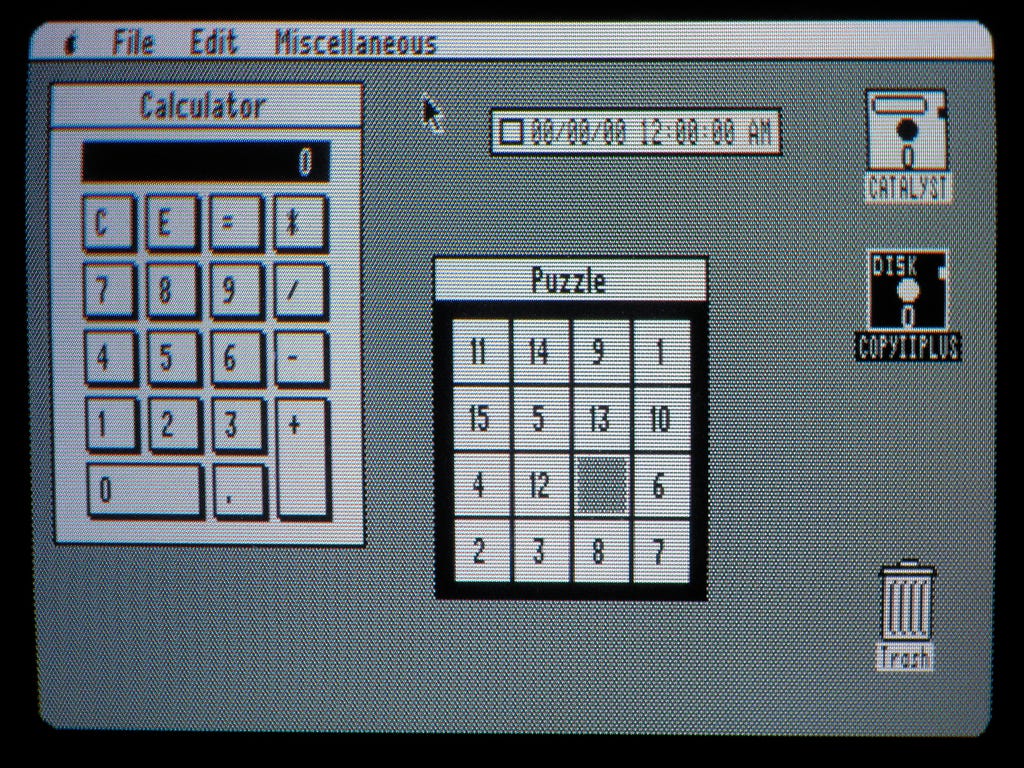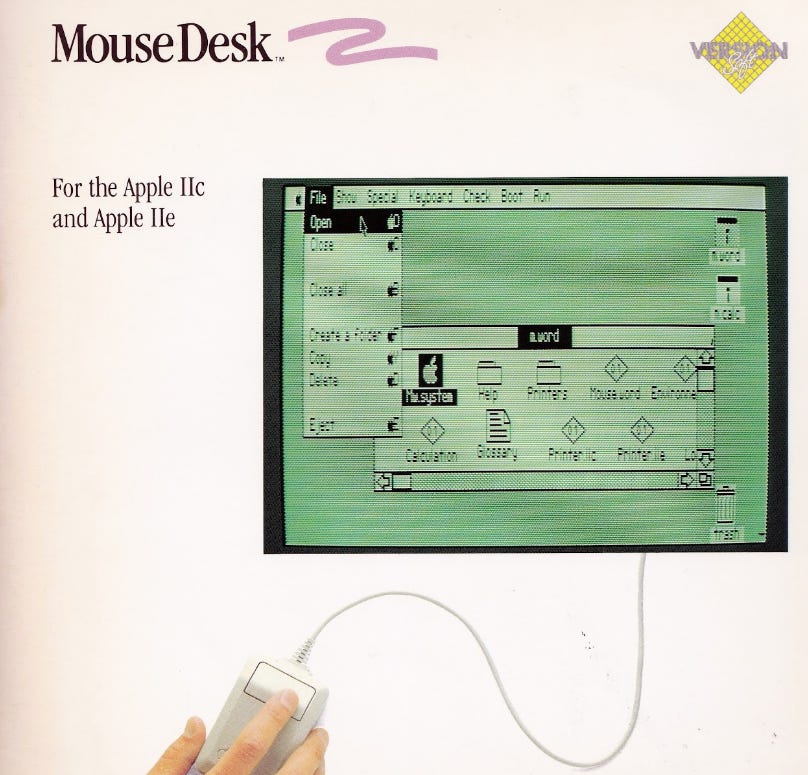Two Mac-like desktops for the Apple II, from 1985.
"Quark Catalyst" and "Mouse Desk" (which would later be purchased by Apple).

Back in 1985 — not long after the introduction of the original Apple Macintosh line (and before the release of the Apple IIgs) — there existed multiple graphical desktop environments for the Apple II line of computers (including the Apple IIe and IIc).
Two of them — “Mouse Desk” and “Quark Catalyst” attempted to look as much like the Macintosh desktop as possible.
Let’s take a look at these two systems. As we go over them, it’s worth remembering that these were built for IIe and IIc systems — with only 128k of RAM. Considering the hardware constraints, they are darned impressive.
Mouse Desk
Mouse Desk was originally developed by a French company (known as “Version Soft”) back in 1985, and released for the Apple IIe and IIc.
This isn’t a full desktop operating system, like GEOS (which also had a version for the Commodore 64). No real applications to speak of.
It did, however, implement a few “Desktop Accessories” (such as existed back on the older Mac System software). Tiny little mini applications, including a sliding puzzle, and a calculator).
Mouse Desk was, in reality, two things: a graphical file manager, and application launcher.
The next year (in 1986), Apple purchased Mouse Desk and re-released it as “Apple Desktop” for the Apple IIgs. This was a stop-gap release until the official GS/OS was ready.

One truly fascinating aspect of Mouse Desk / Apple Desktop… is that it is still under active development. Not joking. There’s a GitHub repository for it and everything.
The source code for Apple Desktop (or Mouse Desk) was never released. Which means all the current development activity are based on disassembled versions that have been reverse engineered.
In fact, a new version (Apple II Desktop Version 1.2 Alpha 44) was just released a few days ago.
Quark Catalyst
Quark Catalyst was a piece of software that called itself a “Program Selector”. The key purpose of Catalyst was to take Apple II program floppies… and move the data over to 3.5” floppies or to hard drives… and then launch them from there.
This was a way to speed up load times as well as reduce the need of swapping out and using 5.25” floppies quite so often.
In 1985 version 3.0 was launched… which included a “Mac like” interface. Which looked exactly like this:
Overall Catalyst was a pretty impressive “clone” of the look and feel of the Mac System software. Like “Mouse Desk”, there really weren’t applications to run here, but it did have some “Accessories”… again… sliding puzzle and calculator.

Quark Catalyst was sold alongside a 3.5” floppy drive that Quark sold for the Apple II. But, technically, you could by the software standalone.
How did they compare?
While I’ve had a chance to use the recently updated versions of the Apple II Desktop, I’ve never found a way to run Catalyst (either on hardware or in an emulator). So it’s hard for me to pass judgement between the two systems — other than to note that the feature set and visuals are strikingly similar.
According to InfoWorld, back in 1986, both programs earned a 7.0 / 10. So, apparently, assuming they were similar is pretty spot on.
Fun side note: Yours truly used to write for InfoWorld (and other IDG owned tech publications) for a number of years. Though long, long after that review of Catalyst and Mouse Desk was published.
The standard, annual subscription to The Lunduke Journal is currently just $1 / month. Which, considering the massive number of perks, is an absolute steal.
You can also get some extra fanciness (like your name in game credits, and regular group hangouts) by becoming a Founding Member subscriber. It’s pretty sweet.








$99 in 1985 is equal to $264.5 today